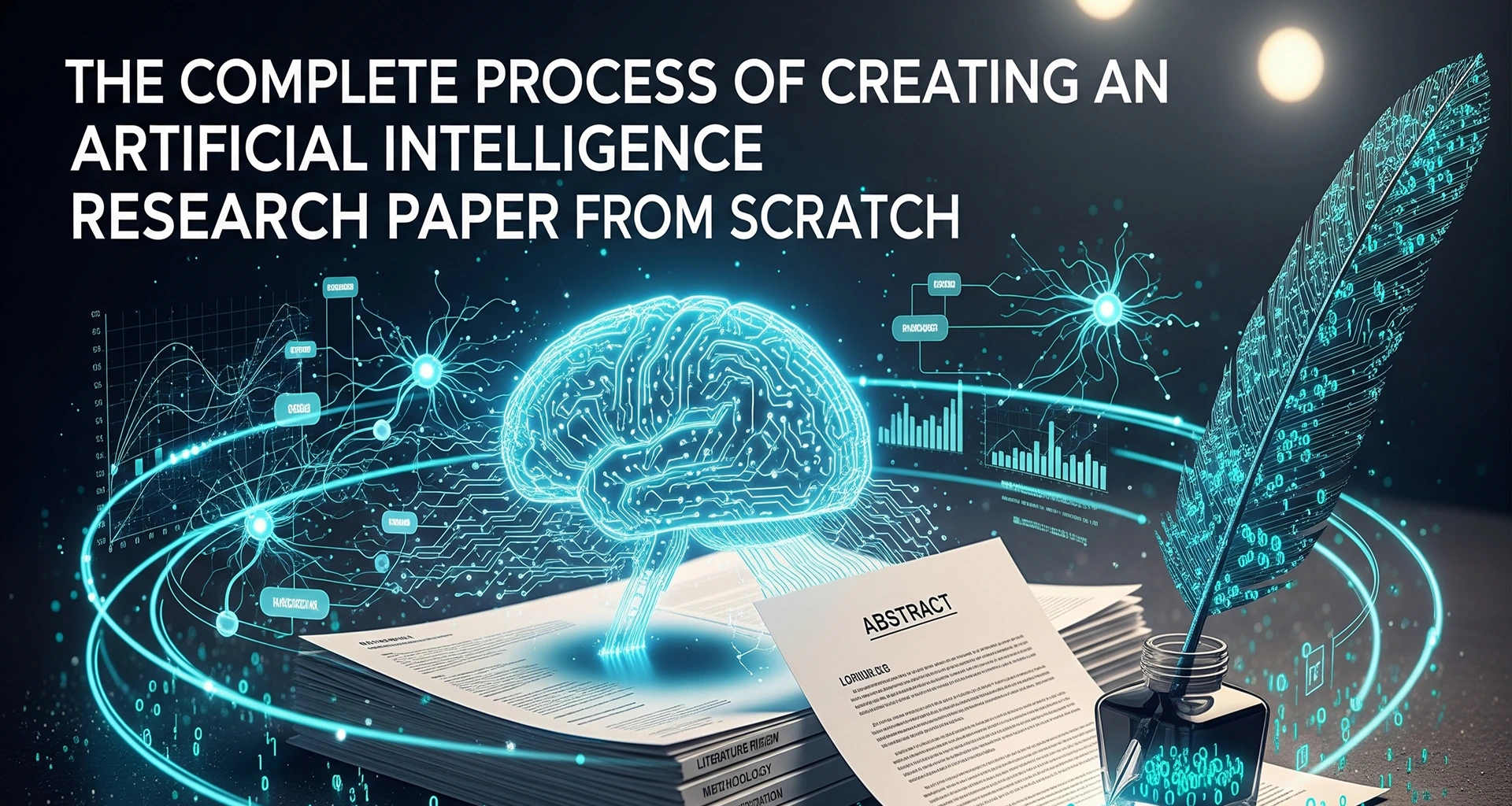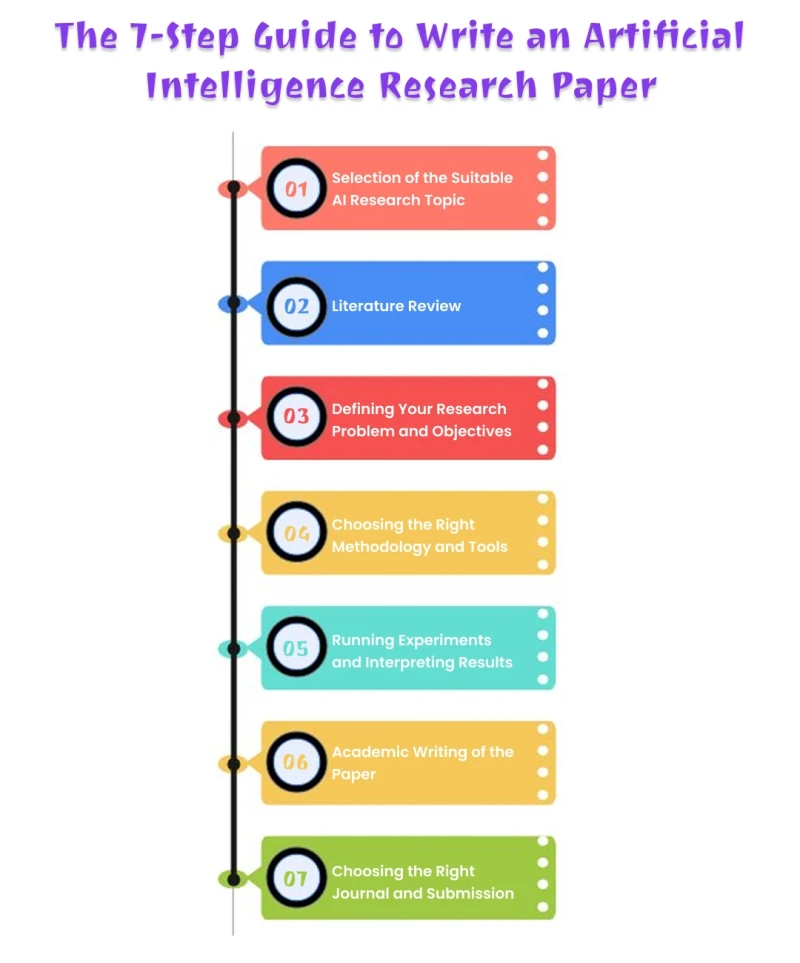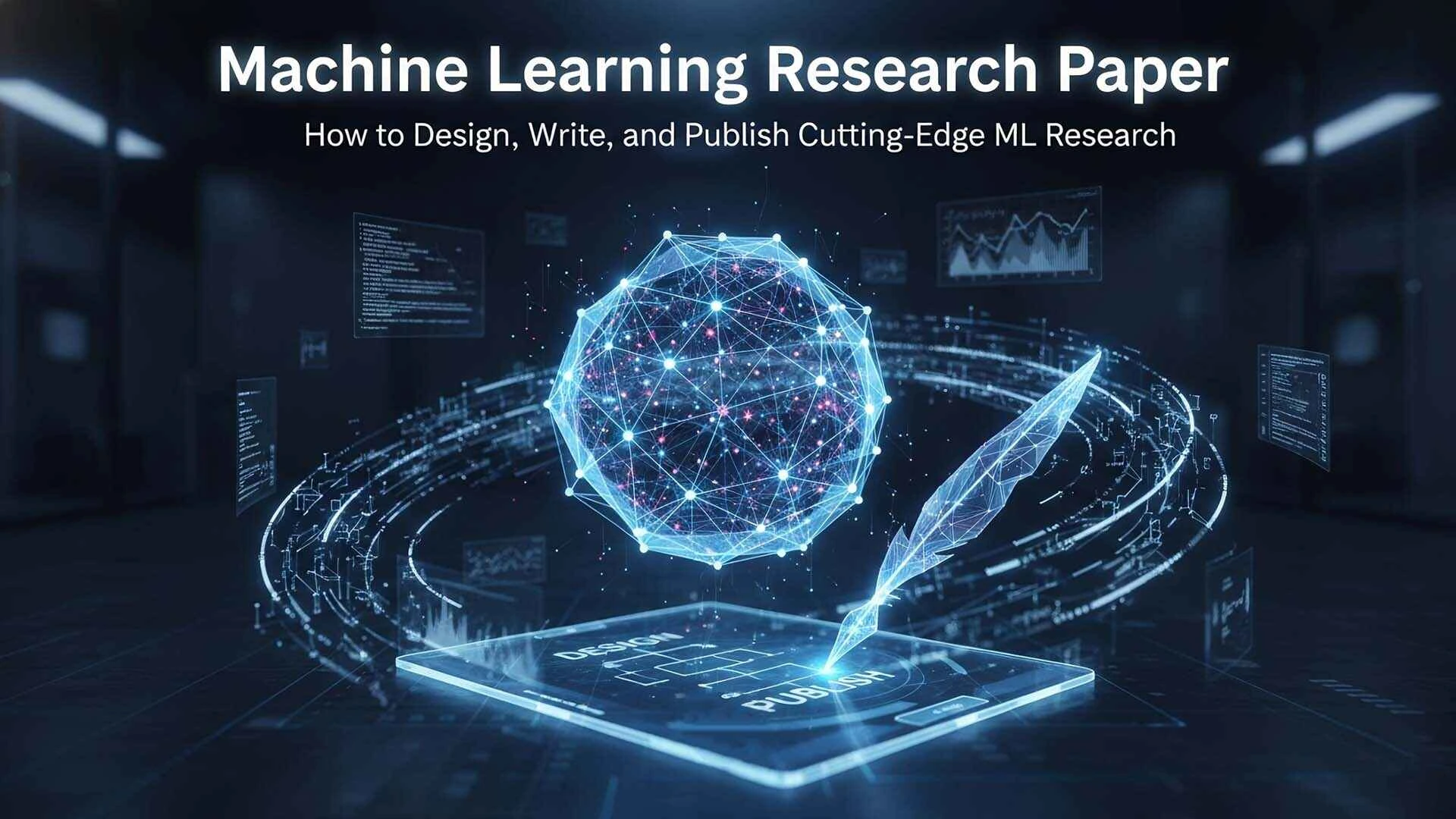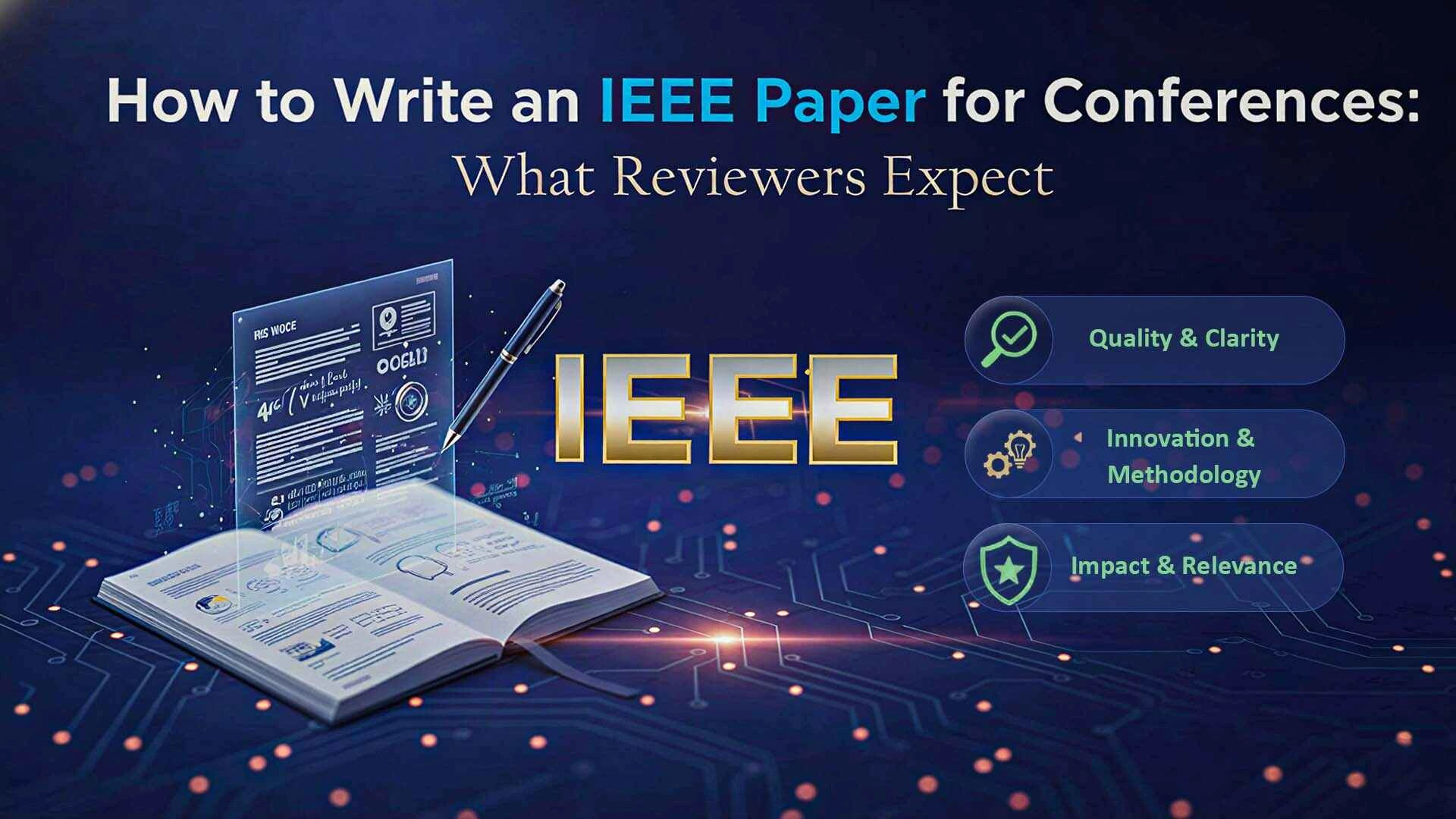
Katy Richard.K
Artificial intelligence has transformed everything from finance and robotics to healthcare and education. With innovations booming at breakneck speed, the demand for artificial intelligence research papers is skyrocketing. As a result, universities and journals are flooded with AI-focused submissions, making it a hotbed for academic research.
In this blog, we’ll guide you through the complete process of writing a high-quality AI research paper. If you're aiming for a publication that stands out, Ondezx is here to support you with expert guidance tailored for AI research excellence.
An artificial intelligence research paper is a scholarly document that presents original findings, theories, or applications related to AI technologies. It can fall into three broad categories: theoretical (focused on algorithms or models), experimental (involving tests or simulations), and application-based (showcasing real-world AI solutions in industries like healthcare or automation).
What sets a strong AI paper apart is its novelty, data-driven analysis, and strict academic rigour. Whether you're proposing a new neural network model or applying machine learning to solve a practical problem, your research must be original, well-supported, and contribute to the academic AI community.

The most important and initial step in creating a good research paper in AI is choosing a good topic. Your topic of research determines the entire direction of your paper, determines its scope, and indeed determines if it is academically as well as practically relevant or not. A good topic choice increases your potential to get published in high-class journals and generates the interest of industry stalwarts as well as academic peers.
Emphasise emerging and frontier subfields like:
Natural Language Processing (NLP)
Computer Vision
Autonomous Systems
Generative AI
Ethical and Responsible AI
Be entirely aligned with your:
Academic aspirations
Reservoirs of available data and computational resources
Your supervisor's field (if applicable)
Look for problems not solved at all or where your solution would yield concrete benefits.
A good literature review is the basis of any quality research paper. Not only does it prove that you are aware of recent work in your study domain, but it also places light on gaps in research that your paper will be able to address.
Google Scholar – for overall academic searching
IEEE Explore – especially useful for computer science and AI research papers
SpringerLink and Scopus – for peer-reviewed, indexed literature
ResearchGate – to connect with researchers and access full texts
Start with the most cited papers to get an idea of anchor work.
Highlight recent advances (last 3–5 years).
Highlight gaps or poorly researched spaces.
Synthetise and assess findings, rather than list them.
This makes the argument for your research and indicates novelty in your work
Once you’ve understood what has already been done, the next step is to pinpoint your exact research problem. This should be a specific, measurable, and relevant issue that your paper aims to solve.
Write a clear and concise problem statement.
Develop objectives or hypotheses that are testable.
Ensure your problem ties directly into the gaps identified in your literature review.
The second step is having resolved what issue you wish to address, defining how you are to do it. This involves choosing an AI methodology and tools for deployment.
Supervised Learning – to categorise, to do regression tasks
Unsupervised Learning – to group or to find patterns
Reinforcement Learning – to address dynamic decision-making problems
Neural Networks/Deep Learning – to process images, videos, speech
Python – Most widely used language to build AI
TensorFlow / Keras – to train and create deep learning models
MATLAB – Best utilised for simulations and numerical computation
Scikit-learn – Convenient for traditional ML algorithms
OpenCV – For real-time computer vision application
Also make sure your experiments are ethically correct, particularly when dealing with sensitive data, and that your approach can be easily replicated by other individuals.
Having selected your methodology, the next step is to act. This involves writing and conducting experiments to validate your hypotheses.
Accuracy – What proportion of the time is the prediction correct?
Precision & Recall – How effective is your model at generating relevant answers?
F1 Score – The balance between precision and recall
Confusion Matrix – In order to understand true/false positives and negatives
Once results are acquired, interpret them reasonably. Do the results support your hypothesis? This is something to consider for your discussion section.
A good AI project will not impress unless it is well presented. Your writing should show clarity, reasonableness, and academic organisation. Use the formal research publication guidelines as your checklist.
The final step is to make your work available to the world by choosing right journals. Publication in the proper journals provides your research with visibility and credibility that it can leverage.
Choose Scopus-indexed or SCI-indexed journals for maximum visibility.
Verify that the scope of the journal matches the topic.
Consider the impact factor, review times, and author policies.

Well-researched AI papers can also be rejected if some avoidable errors are committed while writing and presenting.
Flawed organisation with no logical sequence and mixing up the reader
Absence of novelty, regurgitating what is already out there without providing understanding
Inadequate methodology that cannot defend your process or experimental rigour
Incomplete or inaccurate citations that destroy academic integrity
Complicating your work by using technical terms and failing to provide proper explanation
Ambiguous interpretation of results, making it difficult for readers to comprehend the effect
Avoiding these pitfalls can significantly increase your chances of publishing a research paper in top journals.
Producing an artificial intelligence research paper is possible when you follow a simple, sequential process from topic selection to the ultimate submission. Each step increases your chance of getting accepted and achieving academic excellence. At Ondezx, we skilfully walk experts through every step of the research process to make your work shine. If structure or submission is holding you back, our experts can help. Don't wait; call us now and make your AI ideas come true.

Machine Learning Research Paper: How to Design, Write, and Publish Cutting-Edge ML Research

How to Write an IEEE Paper for Conferences: What Reviewers Expect

Importance of Literature Review in Research – Complete Guide for Scholars

How to Write a Synopsis for a Thesis: A Complete Writing Framework

Top 5 Best Literature Review Writing Service for PhD Scholars